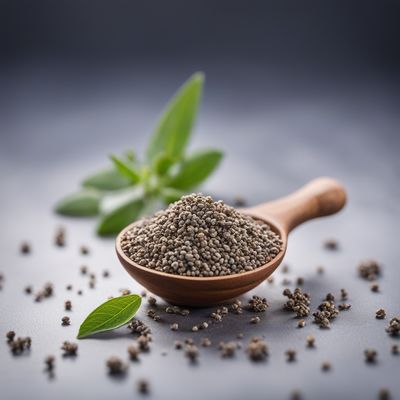
Ingredient
Tucum seeds
The Nutritional Powerhouse: Tucum Seeds
Tucum seeds are small, oval-shaped seeds that come from the tucum palm tree. They have a hard outer shell and a creamy, buttery texture when cooked. These seeds have a slightly sweet and nutty flavor, similar to a combination of coconut and almond. They are often used in desserts, baked goods, and traditional dishes in South American cuisine.
Origins and history
Tucum seeds are native to South America, particularly the Amazon rainforest. They have been a staple food for indigenous communities in the region for centuries, providing a valuable source of nutrition and sustenance. These seeds are also highly valued for their medicinal properties and are used in traditional medicine to treat various ailments. Today, tucum seeds are gaining recognition for their nutritional benefits and culinary versatility.
Nutritional information
Tucum seeds are a rich source of healthy fats, fiber, and protein. They also contain vitamins and minerals such as vitamin E, iron, and potassium. These seeds are relatively high in calories due to their fat content, but they provide a good source of energy and essential nutrients. They are particularly beneficial for those following a plant-based or vegetarian diet.
How to select
When selecting tucum seeds, look for ones that are dry, firm, and free from any signs of moisture or mold. The seeds should have a smooth and intact outer shell. Avoid seeds that appear discolored or have a rancid smell, as this may indicate spoilage. Fresh tucum seeds should have a mild aroma and a vibrant color.
Storage recommendations
To maintain the freshness and quality of tucum seeds, store them in an airtight container in a cool, dry place. This will help prevent them from becoming rancid or losing their flavor. Properly stored, these seeds can last for several months.
How to produce
Tucum palm trees can be grown in tropical or subtropical regions with a warm climate. They require well-drained soil and plenty of sunlight to thrive. The trees can be propagated from seeds or by transplanting young seedlings. With proper care and maintenance, they can produce a bountiful harvest of tucum seeds.
Preparation tips
Tucum seeds can be used in a variety of ways. They can be ground into a powder and used as a thickening agent in soups, stews, or sauces. The creamy texture of these seeds also makes them a great addition to smoothies, puddings, or ice creams. In traditional South American cuisine, tucum seeds are often used in desserts, such as cakes or pastries. They can be roasted, toasted, or incorporated into both sweet and savory dishes for added flavor and nutrition.
Culinary uses
Tucum seeds are commonly used in South American cuisine, particularly in countries like Brazil and Colombia. They are often found in traditional desserts, baked goods, and regional dishes. These seeds are also gaining popularity in the health food industry, where they are used as a nutritious ingredient in various products.
Availability
Tucum seeds are primarily cultivated in South America, particularly in the Amazon rainforest region. They are commonly available in countries like Brazil, Colombia, and Peru. These seeds are less commonly found in other regions, but can sometimes be sourced from specialty stores or online retailers that offer a wide range of exotic ingredients.


